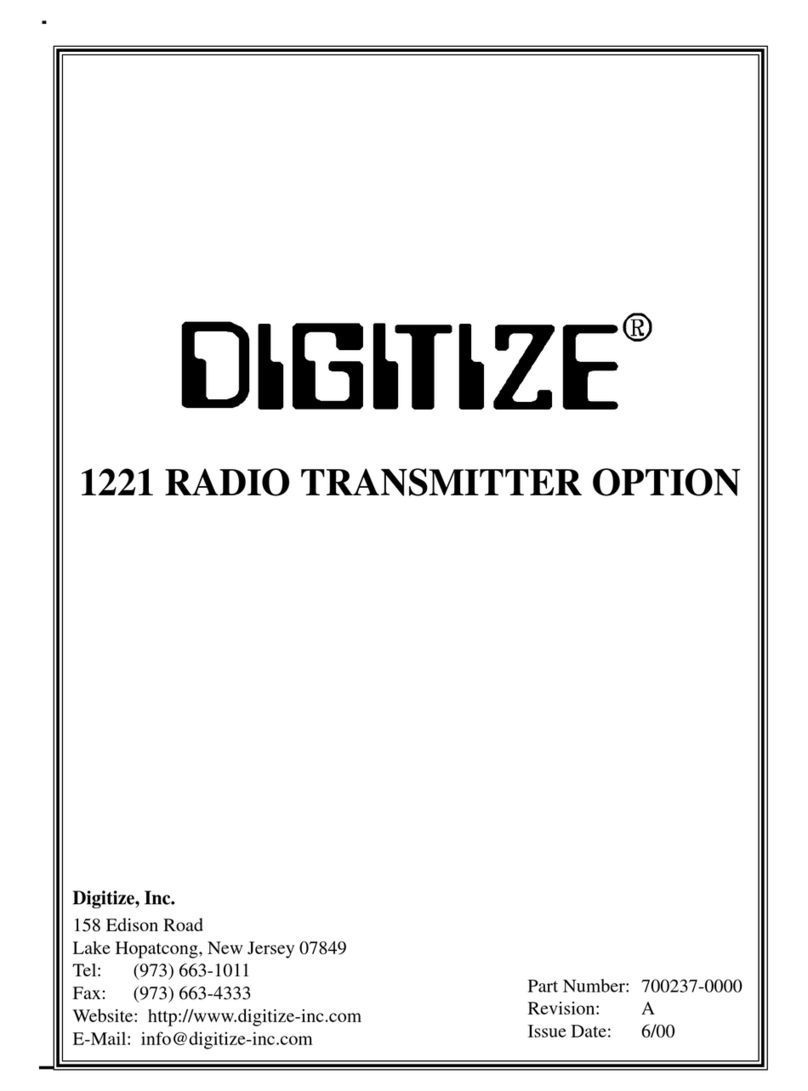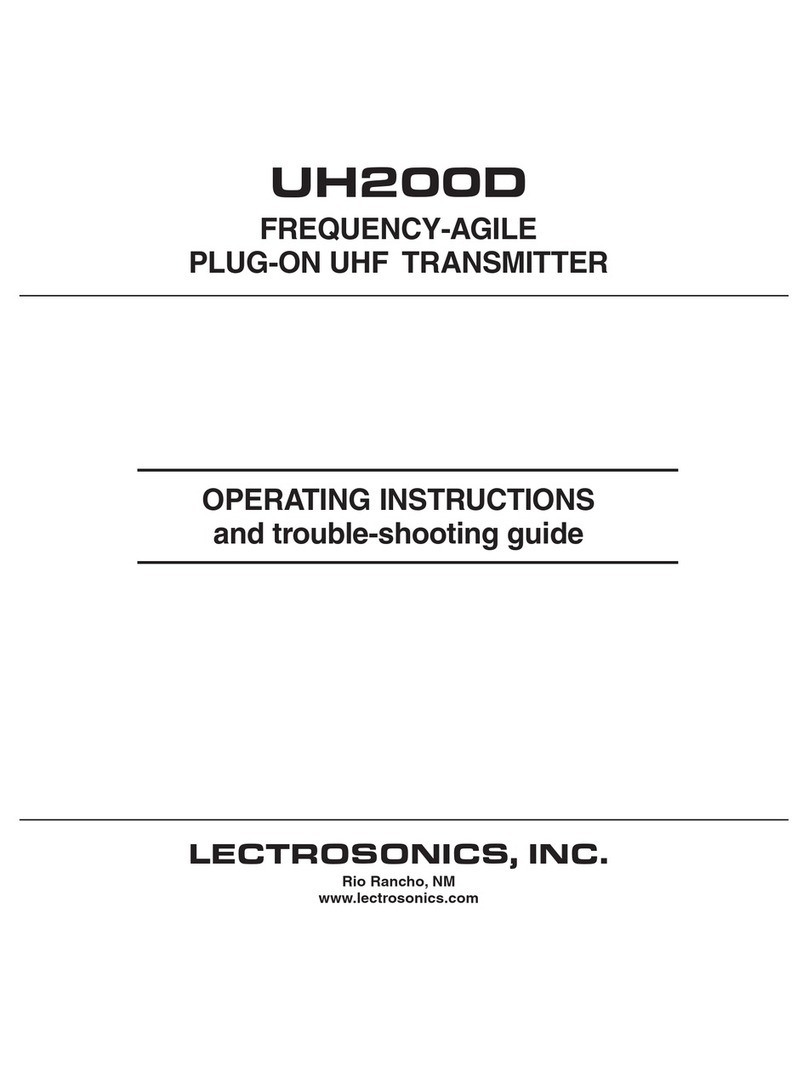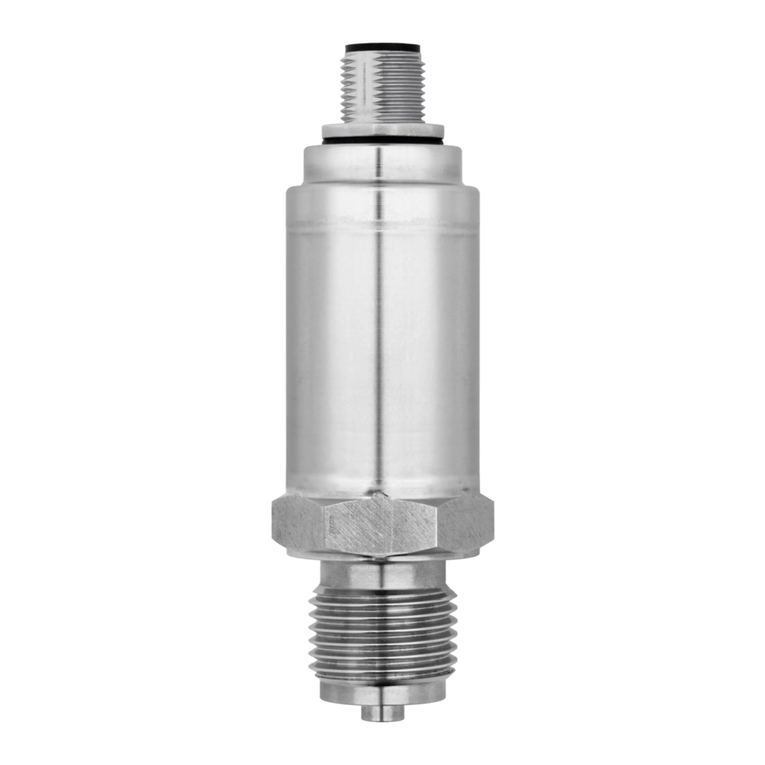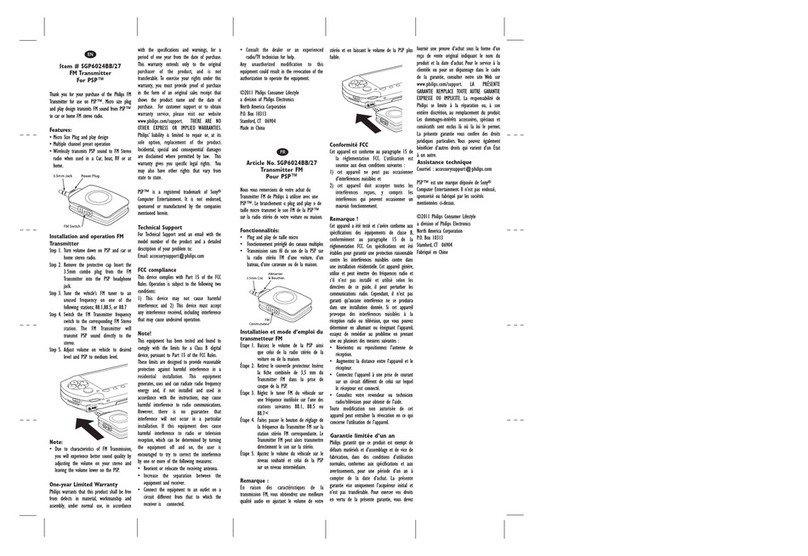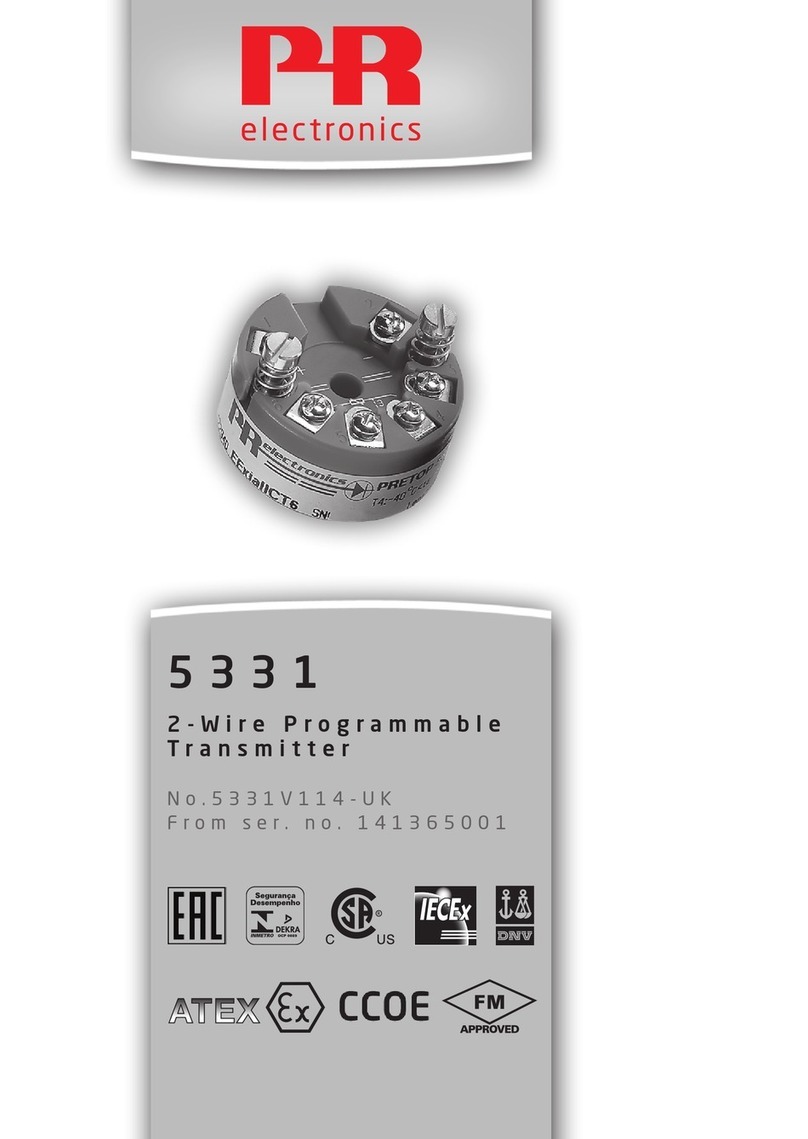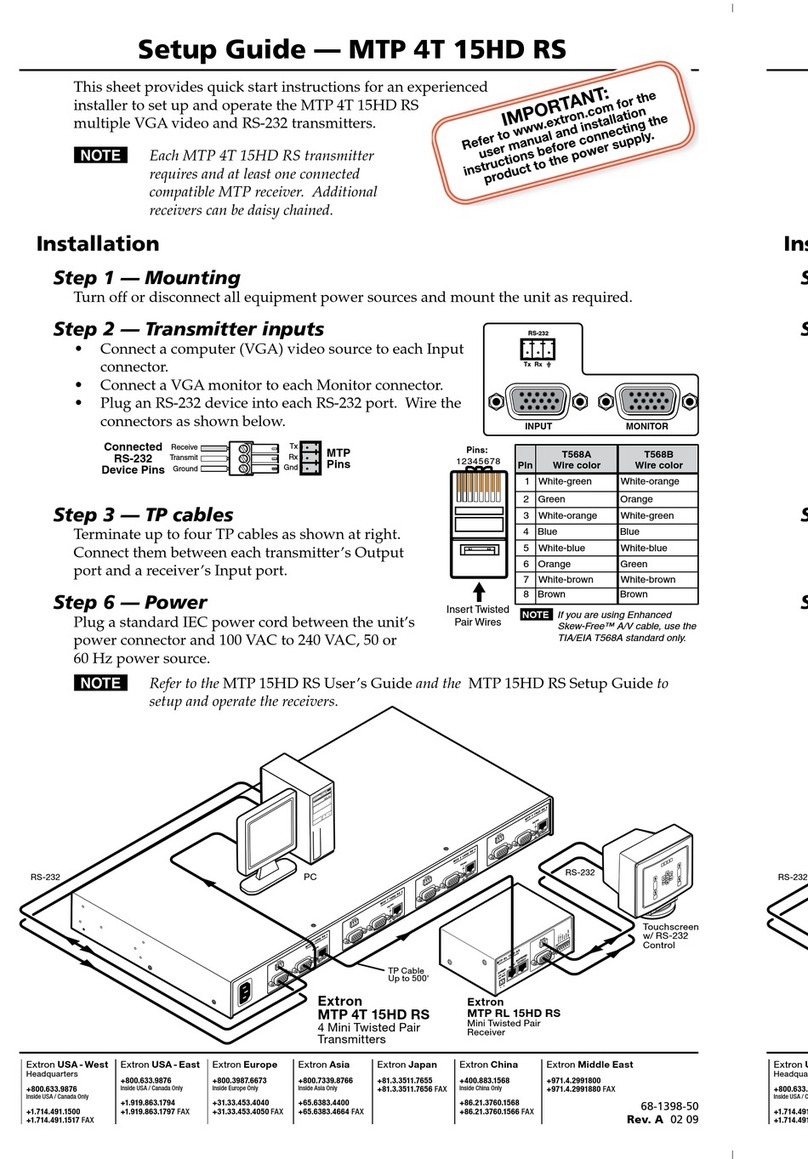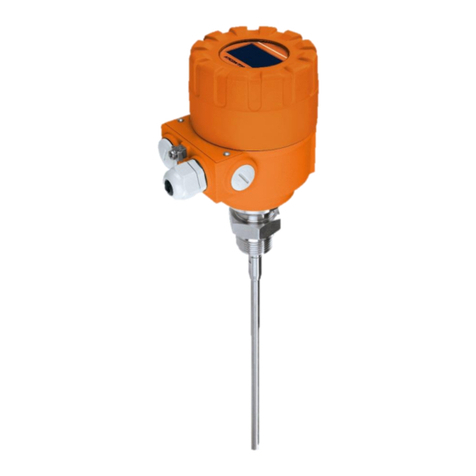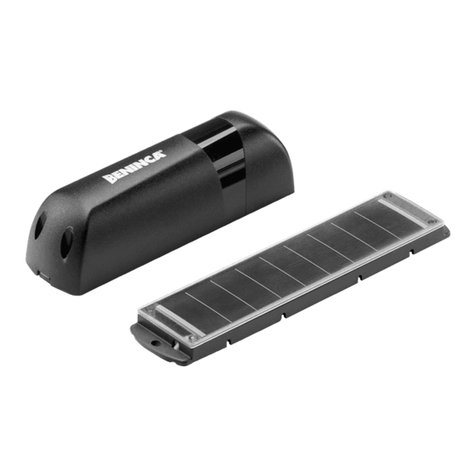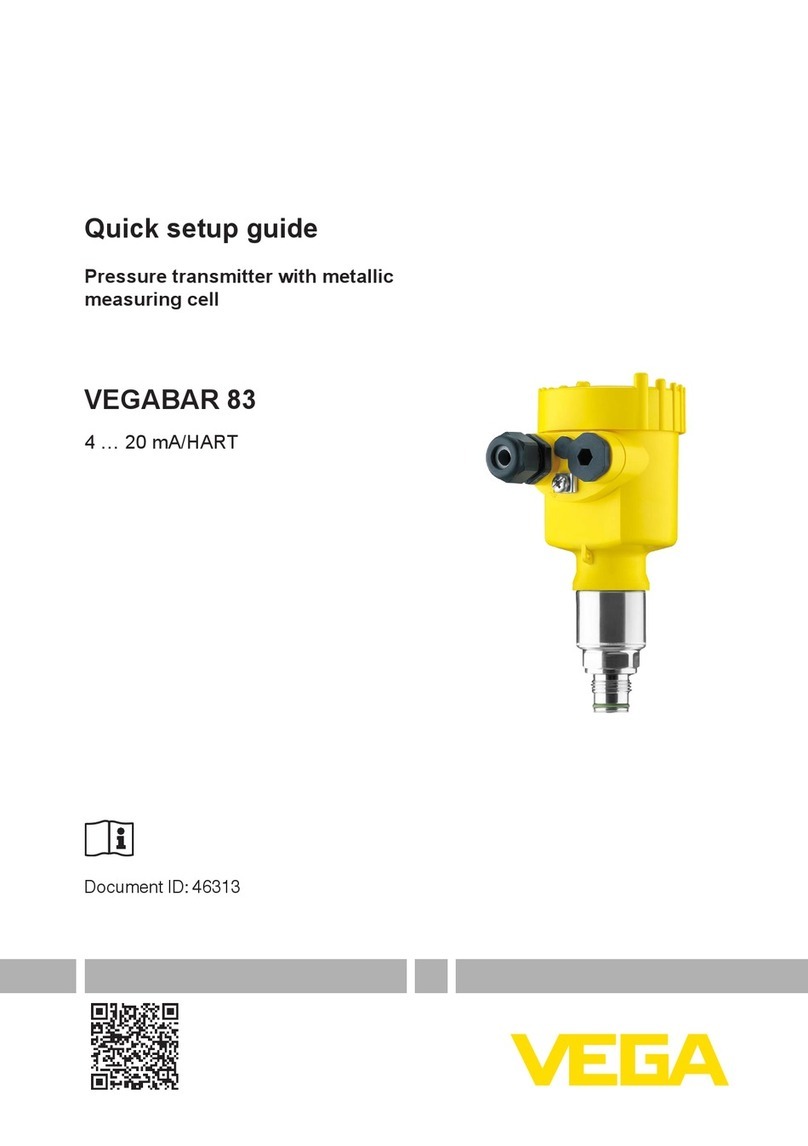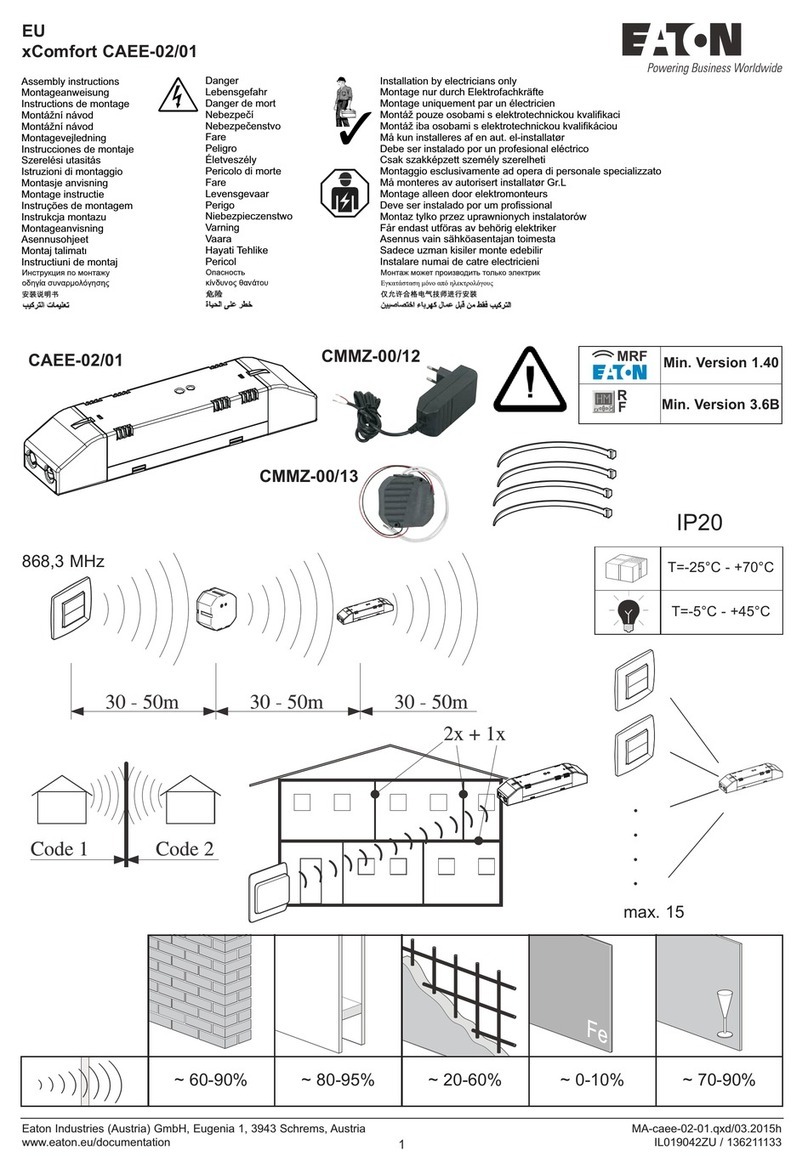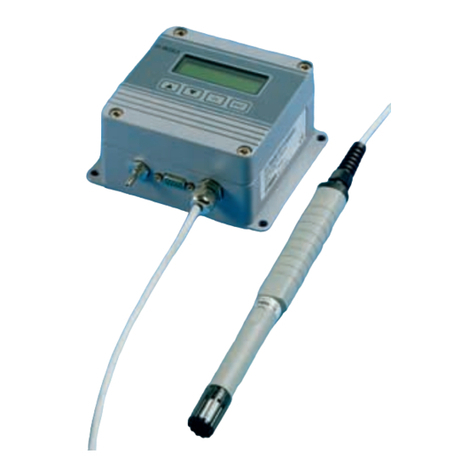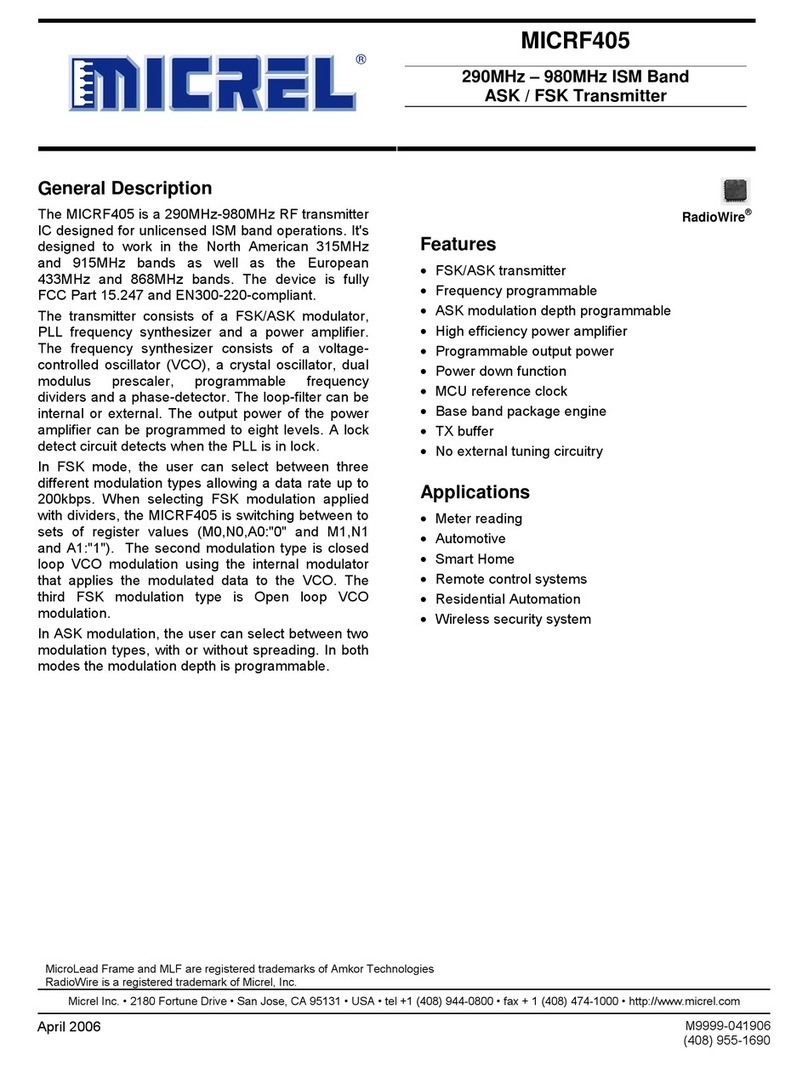DIGITIZE DET-16 User manual

DET-16 User Manual
Digitize, Inc.
158 Edison Road
Lake Hopatcong, New Jersey 0 849
Tel: (9 3) 663-1011 Part Number: 002 1-0001
Fax: (9 3) 663-4333 Revision: G
Website: http://www.digitize-inc.com Program Ver.: 1.0.6

Digitize, Inc.
158 Edison Road
Lake Hopatcong, NJ 0 849-221
The Digitize logo (stylized) is a registered trademark of Digitize, Inc.

PROPRIETARY NOTICE
AND
DISCLAIMER
DIGITIZE, INC.
158 EDISON ROAD
LAKE HOPATCONG, NJ 0 849-221
PH: (9 3) 663-1011
FAX: (9 3) 663-4333
E-Mail: info@digitize-inc.com
Website: http://www.digitize-inc.com
This manual has been prepared by DIGITIZE, INC. for use by its licensees, distributors and
customers. The information contained herein is the property of DIGITIZE, INC. and may not
be copied, disclosed or reproduced, in whole or in part, without the prior written approval of
DIGITIZE, INC. Any unauthorized disclosure to, or use of the enclosed information by,
unauthorized third persons shall void any and all representations, warranties and obligations
on the part of DIGITIZE, INC.
DIGITIZE, INC. reserves the right to make changes to the specifications and material
contained herein without prior notice. The information and/or examples (including, but not
limited to circuitry, wiring diagrams, programming, the operation or use shown) described in
this manual are intended solely to illustrate the operating principles of the particular product.
They are not a warranty, representation or guarantee that a particular example or use shown
will perform in a particular situation. They are given for illustration purposes only.
DIGITIZE, INC. shall not be responsible, nor does it represent, that any example of
illustration will perform in a particular environment or practice unless it specifically makes a
representation to that effect.
The material set f rth herein is f r inf rmati nal purp ses nly, and
DIGITIZE, INC. assumes n patent liability with respect t any inf rmati n r
illustrati ns c ntained herein.


Table of Contents
1 Introduction.................................................................................................. 1
1.1 System Description .............................................................................................................................. 1
1.2 Specifications ....................................................................................................................................... 3
2 Definitions.................................................................................................... 5
3 System Installation.......................................................................................
3.1 Handling...............................................................................................................................................
3.1.1 Precautions....................................................................................................................................
3.1.2 Unpacking and Inspection ............................................................................................................
3.2 Site Location ........................................................................................................................................
3.3 Installation Details ...............................................................................................................................
4 System Operation....................................................................................... 11
4.1 Power Up ........................................................................................................................................... 11
4.2 Normal Operation .............................................................................................................................. 11
4.3 Battery................................................................................................................................................ 12
4.4 AC Power........................................................................................................................................... 12
4.5 Ground Mode ..................................................................................................................................... 13
4.6 Bulldog............................................................................................................................................... 13
4. Standby Mode .................................................................................................................................... 13
4.8 Alarm Relay ....................................................................................................................................... 14
4.9 Trouble Relay..................................................................................................................................... 14
4.10 Buzzer .............................................................................................................................................. 14
4.11 LCD Display .................................................................................................................................... 14
4.12 Loop Shunt Key Switch ................................................................................................................... 14
5 System Programming................................................................................. 1
5.1 UL 864 Compliance ........................................................................................................................... 1
5.2 4x4+1 Keypad.................................................................................................................................... 1
5.3 How To Modify Panel Settings.......................................................................................................... 18
5.4 Function 1 Zone Settings ................................................................................................................... 18
5.4.1 Setting 1 Zone Box Number ....................................................................................................... 19
5.4.2 Setting 2 Zone Alarm Code ........................................................................................................ 19
5.4.3 Setting 3 Zone Alarm Code Rounds ........................................................................................... 20
5.4.4 Setting 4 Zone Trouble Code...................................................................................................... 20
5.4.5 Setting 5 Zone Trouble Code Rounds......................................................................................... 21
5.4.6 Setting 6 Zone Alarm Restore Code ........................................................................................... 21
5.4. Setting Zone Alarm Restore Code Rounds .............................................................................. 22
5.4.8 Setting 8 Zone Trouble Restore Code......................................................................................... 22
5.4.9 Setting 9 Zone Trouble Restore Code Rounds............................................................................ 23
5.4.10 Setting 10 Disable / Enable Zones ............................................................................................ 23
5.4.11 Setting 11 Preempt Troubles..................................................................................................... 23
5.4.12 Setting 12 Preempt Alarms ....................................................................................................... 24
5.4.13 Setting 13 Preempt Power......................................................................................................... 24
5.4.14 Setting 14 Allow Alarm Preemption......................................................................................... 24
5.4.15 Setting 15 Allow Trouble Preemption ...................................................................................... 24
5.4.16 Setting 16 Allow Restore Preemption....................................................................................... 25

5.4.1 Setting 1 Zones: Normally Open / Normally Closed .............................................................. 25
5.4.18 Setting 18 Zone Priority............................................................................................................ 25
5.4.19 Setting 19 Zone Alarm Level.................................................................................................... 26
5.4.20 Setting 20 Zone Trouble Level ................................................................................................. 26
5.5 Function 2 Low Battery Settings........................................................................................................ 26
5.5.1 Setting 1 Low Battery Box Number ........................................................................................... 26
5.5.2 Setting 2 Low Battery Code........................................................................................................ 2
5.5.3 Setting 3 Low Battery Rounds.................................................................................................... 2
5.5.4 Setting 4 Low Battery Restore Code........................................................................................... 2
5.5.5 Setting 5 Low Battery Restore Code Rounds ............................................................................. 28
5.6 Function 3 AC Fail Settings............................................................................................................... 28
5.6.1 Setting 1 AC Fail Box Number................................................................................................... 28
5.6.2 Setting 2 AC Fail Code............................................................................................................... 28
5.6.3 Setting 3 AC Fail Rounds ........................................................................................................... 28
5.6.4 Setting 4 AC Fail Restore Code.................................................................................................. 29
5.6.5 Setting 5 AC Fail Restore Code Rounds..................................................................................... 29
5. Function 4 Transmission Speed ......................................................................................................... 29
5.8 Function 5 Open Loop Wait Time ..................................................................................................... 30
5.9 Function 6 Free Loop Wait Time....................................................................................................... 30
5.10 Function Bulldog Loop Wait Time ............................................................................................... 30
5.11 Function 8 Buzzer Timeout.............................................................................................................. 30
5.12 Function 9 ........................................................................................................................................ 31
5.13 Function 10 ...................................................................................................................................... 31
5.14 Function 11 Bulldog......................................................................................................................... 31
5.15 Function 12 Ground Mode ............................................................................................................... 31
5.16 Function 13 Open / Closed Indexing................................................................................................ 31
5.1 Function 14 Change Passnumber ..................................................................................................... 32
5.18 Function 15 Alarm Relay Programming .......................................................................................... 32
5.19 Function 16 Edit Standby Timeout .................................................................................................. 32
5.20 Function 1 Standby Mode .............................................................................................................. 33
5.21 Function 18 Reset Factory Defaults ................................................................................................. 33
5.22 Function 19 AC Power Delay .......................................................................................................... 33
6 Det-16 Programming Utility...................................................................... 35
6.1 Overview............................................................................................................................................ 35
6.2 Installation.......................................................................................................................................... 35
6.3 Operation............................................................................................................................................ 36
6.3.1 The File Menu............................................................................................................................. 36
6.3.2 The Transfer Menu ..................................................................................................................... 36
6.3.3 The About Menu......................................................................................................................... 3
6.3.4 Editing a Det-16 Configuration .................................................................................................. 3
6.3.5 Main Screen................................................................................................................................ 3
6.3.6 Zone Settings Window................................................................................................................ 38
6.3. Box Settings Window ................................................................................................................. 38
6.3.8 Uploading Firmware to the Det-16 ............................................................................................. 39
6.3.9 Downloading Firmware from the Det-16.................................................................................... 41
6.3.10 Uploading Settings from the Det-16 ......................................................................................... 42
6.3.11 Downloading Settings from the Det-16 .................................................................................... 43
System Testing........................................................................................... 46
8 System Maintenance.................................................................................. 48
8.1 Recommended Maintenance .............................................................................................................. 48
8.2 Battery Maintenance and Replacement.............................................................................................. 48

002 1-0001 Rev. G 05/13 1
1 Introduction
The DIGITIZE Electronic Telegraph Transmitter, 16 Zone (DET-16) is a solid-state
microprocessor coder for use over telegraph hard wire. The DET-16 is designed to operate
with a loop current from 50 mA to 50 mA.
DET-16 Telegraph Transmitter
1.1 System Descripti n
The DIGITIZE DET-16 is a Telegraph Transmitter for Fire and Security Alarms. The unit
has up to 16 End of Line (EOL) resistor zones and includes a CAM lock, AC transformer,
LCD Display with keypad, standby battery and built-in charger. The unit is housed in a steel
enclosure and is suitable for mounting in convenient, out of the way locations on an interior
wall. The DET-16 can be used on the same loop with mechanical Fire Alarm Boxes.

Introduction Digitize Inc.
2 002 1-0001 Rev. G 05/13
Telegraph codes unique to each of the sixteen zones for Trouble, Alarm and Secure as well
as Low Battery and AC Power Fail are transmitted over a 100 milliampere circuit using
PNIS (Positive Non-Interfering Successive) or SNI (Serial Non-Interfering). The DET-16
has line current detection to avoid clashes between more than one transmitting device.
Automatic ground return, a Watch Dog Timer, and a trouble buzzer assure continued main
system operation and operator notification in the event of a box failure.
DET-16 Panel with Enclosure Door Open Revealing the Display Panel.
Transmission speed is adjustable to match existing decoding units, as are the number of
digits for the box number and the last digit for alarm, trouble, and restore. Number of rounds
for each condition is also programmable.
Automatic switchover to battery power is performed upon AC power loss with a low battery
code transmitted if power is not returned in approximately 0 hours (when the battery
voltage drops below 10.5 volts). When the battery voltage drops below 9.5 volts, the unit
bypasses all input circuits to avoid spurious transmission of false alarms.

Introduction Digitize Inc.
002 1-0001 Rev. G 05/13 3
DET-16 Controller B . in Enclosure
1.2 Specificati ns
AC Power In 115 VAC 50/60 Hz @ 250 mA Max.
EOL Inputs 16 Supervised 4. k Ohm End of Line Resistor Inputs
Telegraph Relay Outputs 1 Form C (SPDT) contacts rated for 6 Amps max. @ 24 VDC or
120 VAC.
Alarm Output Contacts 1 Form C (SPDT) contacts rated for 6 Amps max. @ 24 VDC or
120 VAC.
Trouble Output Contacts 1 Form C (SPDT) contacts rated for 6 Amps max. @ 24 VDC or
120 VAC.
Display 4 line x 20 character, 5 x dots with yellow LED backlight.
Viewing Area: 6 mm Wide x 25.2 mm High.
Keypad 4 x4 Conductive Rubber Switchpad
LED Indicators Alarm (Red), Trouble (Yellow), Loop Problem (Yellow),
Watchdog (Red), AC/DC Input (Green)
Beeper 2,200 ± 300 hz. @ 85 dB.
Ethernet 10/100BASE-T Ethernet – Auto-Sensing
USB USB version 2.0
Standby Battery .5 Amp Hour Sealed Lead Acid, Digitize PN 900414-0004
Panel Size 13.5” wide x 15” high x 4“ deep
Construction Electro Galvanized Steel chassis, plastic front bezel
System Weight approx. 18 lbs. including .5 amp hour battery.

Introduction Digitize Inc.
4 002 1-0001 Rev. G 05/13

002 1-0001 Rev. G 05/13 5
2 Definitions
100 mA L p:
Also known as the municipal loop or city loop. This is the wire that runs in and out of the
telegraph boxes and carries the telegraph code. Voltages on these loops can range from
just a few volts to as much as 140 volts dc. Power supplies at the head end are
programmed to maintain 100 mA on the loop, and do so by varying the voltage on the
lines.
B x R und
Is one complete transmission of the box number plus any additional codes.
Bulld g r Bulld gging the Line
A box is said to be “bulldogging” when it transmits on the loop that already has another
box transmitting on it. When a zone on a panel is tripped the panel looks to the loop to
see if any other boxes are currently transmitting. If another box is currently transmitting,
it will wait for a preprogrammed time period after which it will bulldog the loop and
transmit over the other box.
It was a feature of the older windup boxes that needed to transmit within a certain period
after the hook was pulled or risk winding down without sending the alarm.
F rm F ur
Power supply cards designed to power telegraph loops.
Gr und M de
This is a backup method for transmitting an Alarm when an open loop condition exists. If
a telegraph transmitter needs to make a transmission and detects an “Open Loop”
condition, it will then switch to Ground Mode in an attempt to get the transmission
through. At the same time, when an Open Loop condition occurs, the Form Four cards at
the head end detect the open and apply a positive voltage to both sides of the loop and
references earth ground as the negative side of the loop. The telegraph box sends the
transmission coding the loop to earth ground.
Open L p
Current must flow through the loop at all times in order to transmit an alarm. Any break
in the loop stops the flow of current, creating an “Open Loop”. When an Open Loop
occurs, the Form Four card will detect the absence of current flow and enter “Ground
Mode”.
PNIS (P sitive N n-Interfering Successive)
Each box on a telegraph loop monitors the telegraph for coding activity and waits for a
“quiet” before proceeding to send its telegraph transmission.

Definitions Digitize Inc.
6 002 1-0001 Rev. G 05/13
Preempti n
Where a zone of a higher status or priority interrupts the current telegraph transmission of
a zone of lesser status or priority. The zone which has been interrupted is reinstalled on
the queue awaiting transmission.
Transmissi n Speed
The speed at which a telegraph transmitter sends its transmission. The transmission speed
is the time it will take for one opening and closing of the 100 mA line. The speed
generally ranges from 1/8 second to 4 seconds.

002 1-0001 Rev. G 05/13
3 System Installation
3.1 Handling
3.1.1 Precauti ns
Cauti n: D n t t uch circuitry during installati n as static discharge may damage
c mp nents.
3.1.2 Unpacking and Inspecti n
Before opening, inspect the shipping container for unusual damage. Then unpack the unit
and inspect it for scratches, dents, and loose internal components. If your inspection reveals
any physical damage, retain the packing material and contact the carrier immediately. Each
unit has been thoroughly inspected prior to shipment.
3.2 Site L cati n
The individual site selection for the DET-16 Telegraphic Coded Transmitter is
dependent on the location of the devices used to activate the zone inputs. Normally, the
DET-16 would be installed next to the interior Fire Alarm Panel. The DET-16 should be
located as close as possible and the interconnecting wires should be run in conduit.
3.3 Installati n Details
1. Lightning protection should be provided for the 100mA Telegraph Line as it enters the
building, as it enters at the DET-16 and at the AC Terminal Input.
2. Mount the shell in the desired location. There are four holes in the rear of the enclosure for
this purpose.
3. Remove the desired knockouts for the AC power to enter the box. Also, remove knock-
outs for the interconnection wiring to the fire alarm panel, as well as for the coded line.
Lightning protection should be wired in at the 115V AC input side of the transformer.
4. Install the conduit and wiring into the shell, as per local electrical codes. The DET-16 has
a buzzer that will activate when there is an open or trouble. If the trouble relay output of
the DET-16 is connected to the fire alarm panel trouble input, the buzzer can be disabled if
desired.
5. Should the fire alarm panel have a local trouble input, then it is suggested that the trouble
contacts be connected to this input. A FORM “C” contact is supplied for this purpose.
6. The Dry Contact Inputs are the next set of connections and are located at the top of PCB.
. Remove the End of Line Resistor and install the wiring from the Fire Alarm Panel as per
drawing. Install the wiring from the output of the fire alarm panel to the different inputs
and install the End of Line Resistor into the fire alarm panel outputs.

System Installation Digitize Inc.
8 002 1-0001 Rev. G 05/13
8. Apply 120 VAC power to the DET-16 step down transformer. Then connect the 12 VDC
battery for back up.
9. Call the alarm receiving location and request a test of the box.
10. Activate each input in the same manner that the fire system would. Be sure that the code
for the desired input is actually received at the alarm receiving location.
11. When the testing is complete, close and lock the front door of the cabinet.
12. Most locations like to know which zones activate which input. This can be accomplished
by listing them inside the front door.
DET-16 with Display Door Open

Digitize Inc. System Installation
002 1-0001 Rev. G 05/13 9
DET-16 Controller PCB Wiring Diagram
>
>
DET-16 Display Panel

System Installation Digitize Inc.
10 002 1-0001 Rev. G 05/13

002 1-0001 Rev. G 05/13 11
4 System Operation
4.1 P wer Up
During power up, the DET-16 panel displays the following:
Note: Version Number V1.0.0 may be different.
While powering up, the panel will test the EE Memory. The EE Memory stores the user
selectable panel settings. If the panel detects corrupted data in the EE Memory, it will
automatically rewrite the memory with the factory default settings.
4.2 N rmal Operati n
The following display represents a panel during Normal Operation.
During normal operation, the panel will be testing the following functions:
a. Test each of the 16 zone inputs for change.
b. Test the status of the 100 mA Loop.
c. Test the status of the Backup Battery and the AC Power Supply.

System Operation Digitize Inc.
12 002 1-0001 Rev. G 05/13
4.3 Battery
The DET-16 panel is shipped with a 12 volt amp-hour lead acid battery. This battery, when
new and fully charged, will provide more than 0 hours of continuous “quiet” operation for
the panel during an ac power failure.
During normal operation, the panel will continuously charge the battery. Once every two
minutes, the panel will test that the battery is connected to the panel and measure the current
battery voltage. The voltage will be displayed on the 2
nd
line of the display.
Remember that the battery is nly tested nce every tw minutes.
A Battery Failure will be reported if any of the following conditions occur:
1. The battery is not connected to the panel.
2. The battery is accidentally connected backwards disabling Fuse F3.
3. Fuse F3 has been disabled due to some other over current problem.
4. The battery voltage currently measures less than 10.5 volts.
When a battery failure is detected, the panel Trouble Relay will release. The display will
show the following data concerning the battery.
See Function 2 to program how the panel will react when a battery failure is detected and
corrected. The panel can be programmed to initiate a telegraph transmission when a battery
failure is detected and corrected.
Note: If the battery is allowed to completely discharge during an AC Power Failure, the user
is encouraged to consider replacing the battery. Sealed Lead Acid batteries ratings drop
considerably after a “Deep Discharge Cycle”. Battery ratings also will decrease over time. A
battery testing procedure should be implemented to guarantee a minimum time for standby
operation and to replace old batteries.
4.4 AC P wer
AC power for the DET-16 is provided by a 14 VAC Class B transformer mounted inside the
panel. During normal operation, the ac power input supplies power for the panel and the
backup battery charger. Below is a typical display indicating the battery charger voltage.

Digitize Inc. System Operation
002 1-0001 Rev. G 05/13 13
An AC Power Failure will be reported after a delay that is programmed using Function 19 ( 1
to 255 minutes), if any of the following conditions occur:
1. The AC voltage failure allowing the backup battery to begin to power the panel.
2. Fuse F4 opens for any reason.
When an ac power failure is detected, the panel Trouble Relay will release. The display will
show the following data concerning the ac power.
4.5 Gr und M de
The DET-16 panel will transmit using Ground Mode whenever the panel detects an Open
Loop condition and Function 12 is enabled. The top line of the display will alternate with
“GROUND MODE” and “TRANSMITTING” while the panel transmits on the loop.
4.6 Bulld g
The DET-16 panel will “BULLDOG” (See Definitions) the telegraph line when all of the
following occur:
a. The panel has a condition which requires it to transmit over the telegraph loop, and
b. The panel detects that the telegraph loop has remained “busy” for a period longer than the
programmed timeout (See Function ), and
c. The BULLDOG option has been enabled (See Function 11).
4.7 Standby M de
Standby Mode allows an installer to test the zone inputs of the panel without worrying that
the panel inadvertently transmits on the telegraph loop. To turn Standby Mode on and off,
use Function 1 . The panel will automatically return to Normal Operation if the panel
remains in Standby Mode longer than the programmed Standby Timeout (factory default is
60 minutes).

System Operation Digitize Inc.
14 002 1-0001 Rev. G 05/13
4.8 Alarm Relay
The Alarm Relay has a set of Form C relay contacts that “turn on” whenever any of the 16
EOL zones remains in an “Alarm” condition. All of the 16 zones must return from the Alarm
state before the relay will “turn off”. This is the default setup.
Alternately, using Function 15, the Alarm relay can be programmed for Serial Non-
Interfering mode. In this setting, just prior to a transmission, the Code relay will open and the
Alarm relay will code out the transmission. At the end of the transmission, the Alarm relay
will turn off and the Code relay will close.
4.9 Tr uble Relay
The Trouble Relay has a set of Form C relay contacts that “remain on” whenever the panel is
in service. If all power is removed from the panel, the Trouble Relay will “turn off”. If any
Trouble condition exists on the panel, the Trouble relay will “turn off”.
4.10 Buzzer
The DET-16 controller board contains an 85 dB buzzer. The buzzer will sound when any of
the following conditions occur:
1. AC Power Failure
2. Battery Failure
3. Telegraph Loop Open and a transmission is about to occur.
4. Any of the 16 EOL zones goes into a Trouble State, if the zone is programmed to
transmit a code on a trouble condition.
Press the CLR button to silence the Buzzer. The Buzzer also has a timeout feature that will
automatically silence the Buzzer. See Function 8.
4.11 LCD Display
The DET-16 panel also contains a 4 line by 20 character LCD display with green LED
backlighting. During normal operation the backlight will remain off. The backlight turns on
during a telegraph transmission and anytime there is keypad activity.
4.12 L p Shunt Key Switch
The Loop shunt key switch allows the panel to be quickly shunted from the Telegraph Loop
without having to disconnect the wiring for the panel.
To shunt the panel, the operator installs a key in the Loop Shunt Key Switch located on the
front panel and turns it ¼ turn clockwise.
The door to the enclosure cannot be closed while the panel is shunted from the loop.
Table of contents
Other DIGITIZE Transmitter manuals
Popular Transmitter manuals by other brands
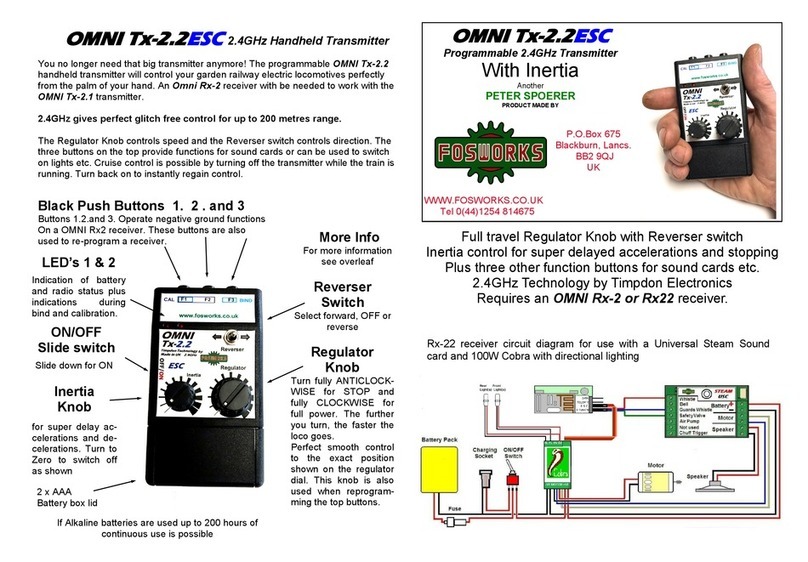
Fosworks
Fosworks OMNI Tx-2.2ESC quick start guide
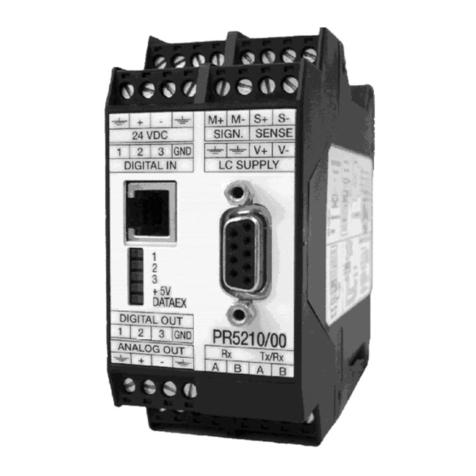
Sartorius
Sartorius PR 5210 Series operating manual
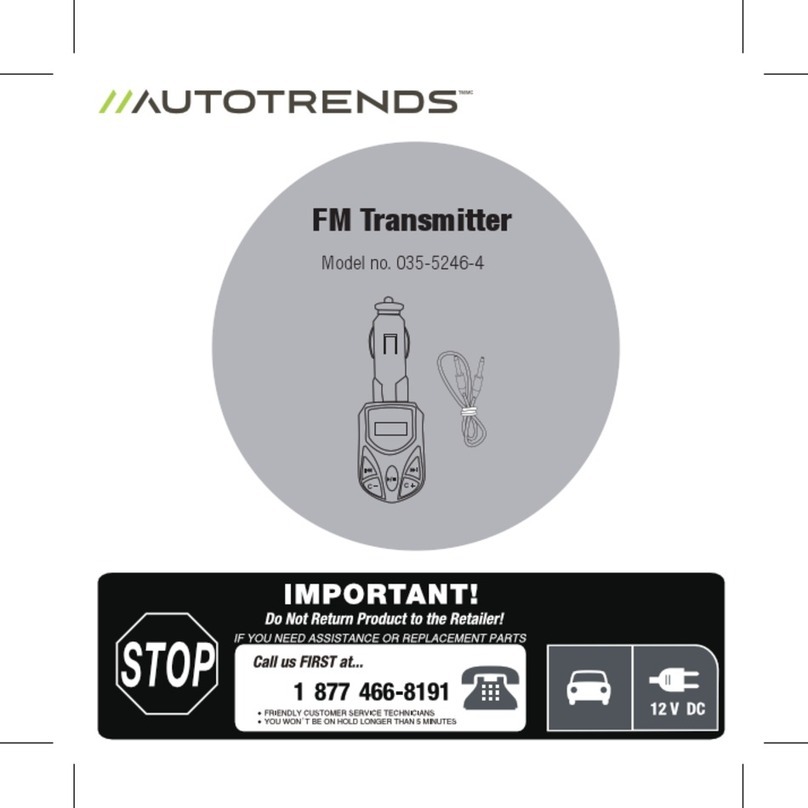
AutoTrends
AutoTrends 035-5246-4 instruction manual
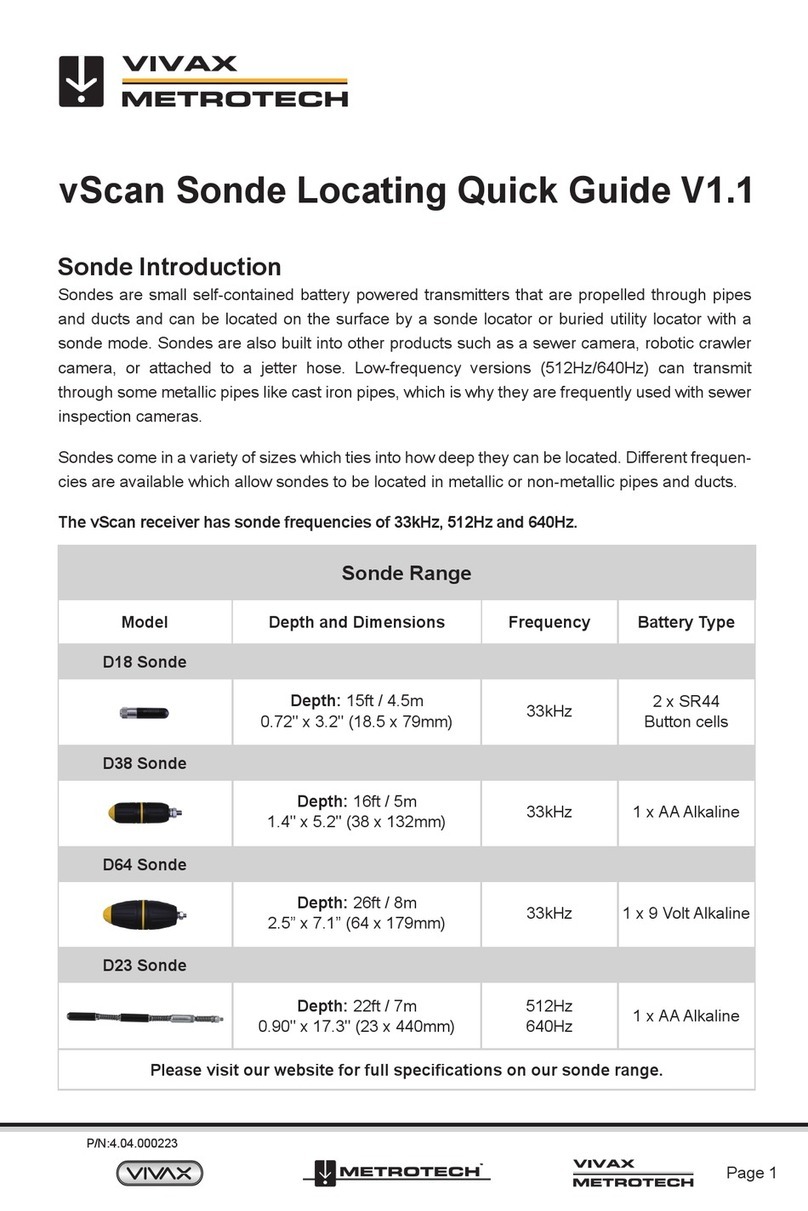
Vivax Metrotech
Vivax Metrotech vScan D18 quick guide
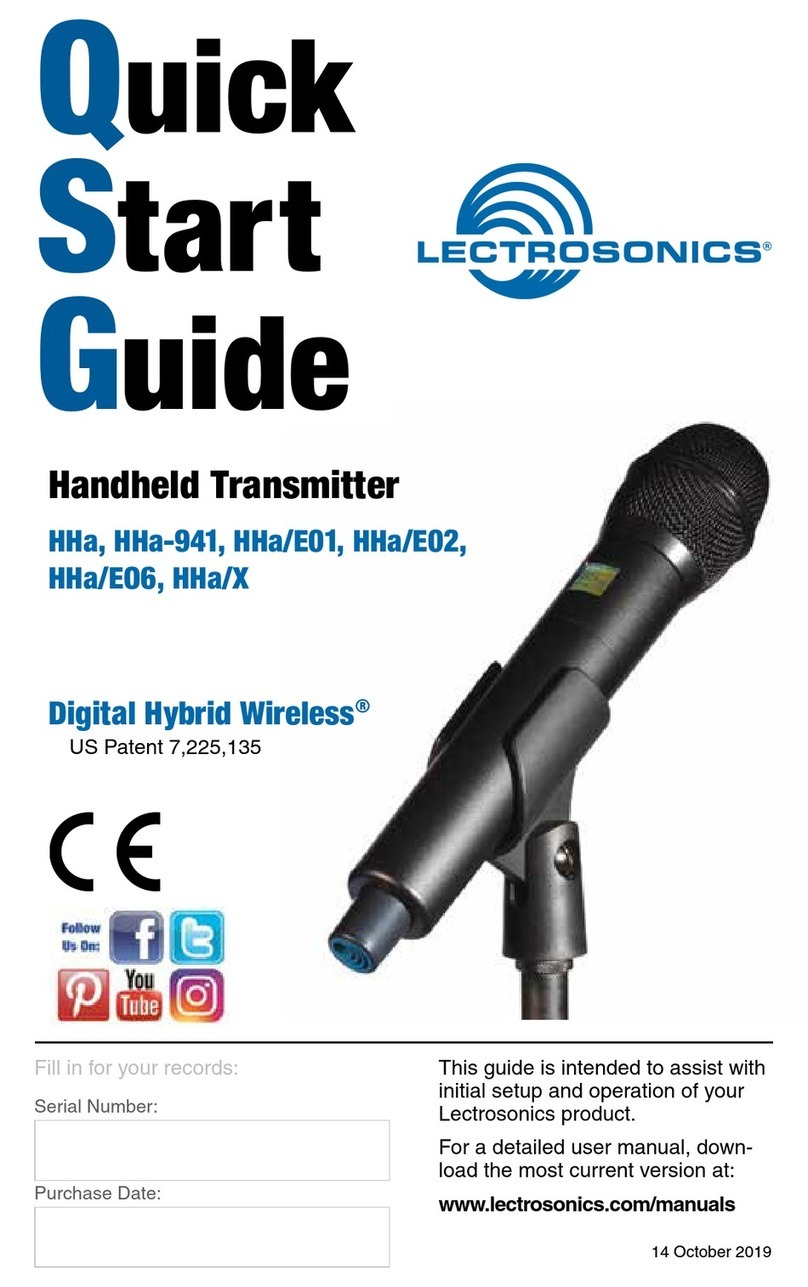
Lectrosonics
Lectrosonics HHa-941 quick start guide
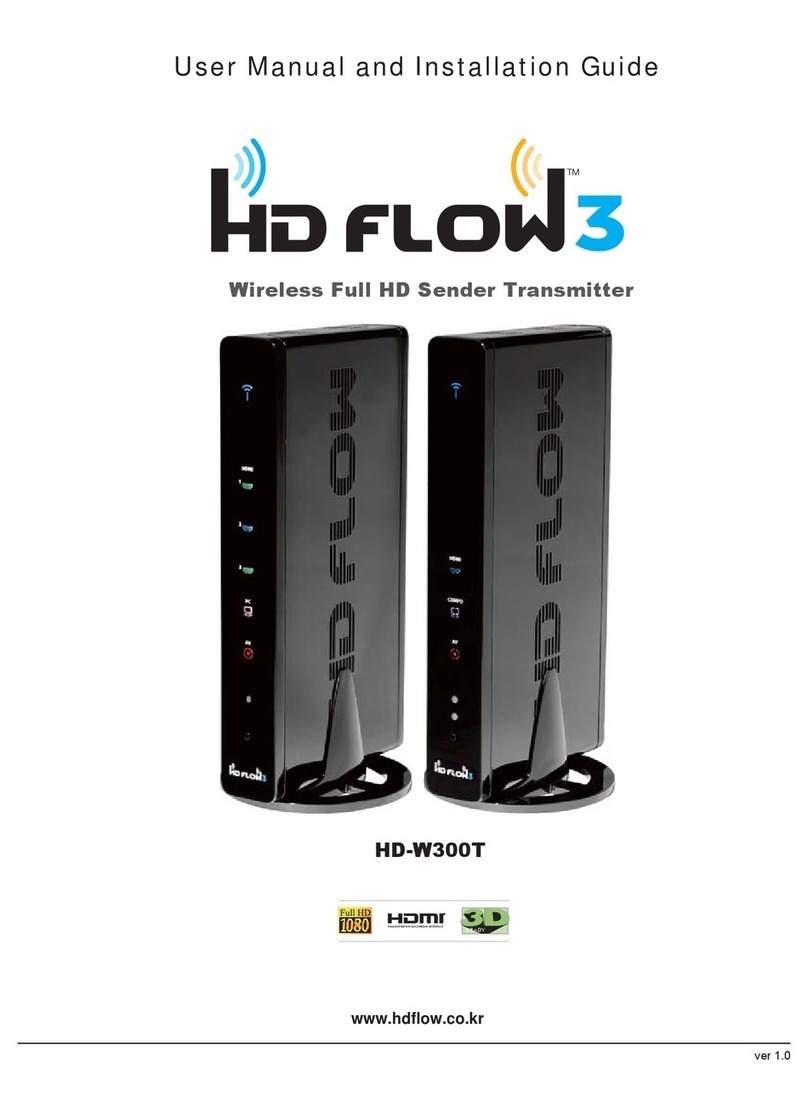
HD Flow3
HD Flow3 HD-W300T User manual and installation guide
